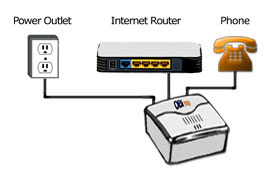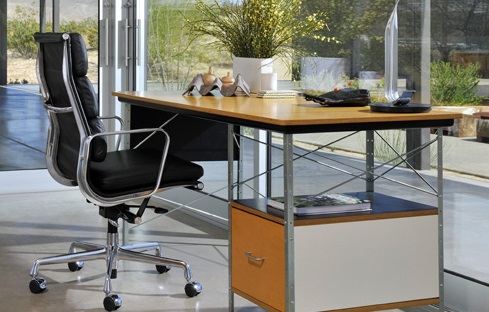Mattress Specs

Generally, heavier weights do better with firmer and thicker mattresses/toppers. Lighter weights can go with with softer mattresses/toppers. Side sleepers tend to need a thicker soft comfort layer than back sleepers, and stomach sleepers tend to need the thinnest comfort layers of all.
The Industry: Tempur Sealy International and Serta Sealy (Stearns and Foster, Sealy, Simmons, Serta, and TempurPedic) now assemble about 80% of all the mattresses sold in North America, and make different models tailored for different retailers. It is difficult to find truth regarding build quality and materials, and even websites/forums (ie TheMattressUnderground.com) get referral fees from mattress manufacturers, so they may be stuck recommending mattresses of either great or horrid quality. Consumer Reports (CR) and Sleep Like The Dead (SLTD) just compile reviews from the masses, hard to trust.
The Material: Natural Latex (rubber from plants) is most durable, lasting 20+ years, while synthetic foams (Memory Foam and Polyfoam) are petroleum byproducts whose cells break down more easily from tension, so instead Memory Foam or Innerspring last 10-15 years or 6-7 years for bad ones. Density of latex / memory foam / polyfoam is measured in ILD – pressure to compress a layer of it. Of course, denser means more durable and firmer (but less soft). There is disagreement as to the failure point of mattresses that shortens their lifespan, either 1) the foam support layers (or around the springs with innerspring mattresses), or 2) the top comfort layers. Micro coil mattresses break down quickly and hybrid latex/innerspring may be a great alternative, but innersprings are made one-sided lately because people don’t tend to flip them (even though two-sided means double the life of the mattress).
Best Long-Term Solution: Latex Mattress
Best solution: get a 1) mattress that is entirely latex (highest longevity), and 2) with top layers on the denser side (and if you need softer than the firm dense mattress allows, get a soft mattress topper that you could replace cheaply if it breaks down).
Specs: In general, 19-24 ILD in latex would be considered to be in the soft range for “average” body types while 28+ ILD is better for heavier body types. Latex quality also depends on the type and blend. Talalay is better than Dunlop (Both ways of making the latex, Dunlop is more firm for those who like firmness or for people over 200lbs). Also, blended latex Talalay is better than 100% Talalay, as it is more durable, cheaper and feels similar.
Premium Latex Mattress ~$1k-2k
SleepEZ from [SleepEZ] $1-$2k. This is the best quality long-term (20+ yrs) solution. The 13″ with layers Xtrafirm, Firm, Medium, Medium (don’t get soft layer because it won’t last long) is the most recommended combo but most expensive product. These latex mattresses can also be ordered with 5.5 lb Sensus (memory foam) instead of latex in the top layer.
Substitute: Medium-Term – Ultimate Dreams Eurotop Latex Mattress (Amazon Seller “Dreamfoam” aka Brooklyn Bedding) $700-$1k [Amazon] (sister company of SleepEZ). This isn’t all latex, has foam support, so will not last as long as the SleepEz.
Don’t get: The big name brands as they are overpriced and bad quality (Serta, Sealy, Simmons, Kluft, Aireloom and Duxiana are 7k+ and even have bad comfort), also other newbie “miracle” mattress sites like: Saatva, Keetsah, Casper, Leesa, Yogabed. Sleep Number has poor quality foundations. Sleep Number is the worst (expensive, lasts 6-7 years).
Budget Alternatives for Short to Medium-Term: Topper or Affordable Memory Foam $500-$900
Add a premium latex topper to your current bed!
Mattress Topper Buying Guide Tips: If the mattress needs only a little extra softness, then get a 1″ topper. For a fair bit of extra softness and pressure relief, then 2″, or for a lot of extra softness, then a 3″ topper. Thicker and denser will usually last longer, so recommended is the 3″.
Best Latex Topper $60-$350: Rejuvenite Talalay Latex Mattress Topper 3″ $280-$427 [Mattresses.net]. Secondary: SleepEZ Talalay Topper $360-570 from [SleepEZ], or a premium Memory Foam 5.3 lb density at [FoamOrder], or to go ultra-budget a Cheap Memory Foam Topper $60-80 from Overstock like example (only ~3lb Density)
Affordable Memory Foam $200-$1k
Don’t spend more on premium memory foams, since you could be instead getting the more durable latex. Latex can be as soft as memory foam, but if you must get memory foam, know the actual density of the memory foam and the ILD of the polyfoam in the support layers underneath. Get the 5 lb because it’ll last longer (even if they recommend the softer 4 lb for “average” body types instead of the firmer 5 for heavier). Sensus is better than Aerus foam. Note: Because density/ILD is measured differently for different materials (latex / polyfoam), it’s not comparable between them.
Do not get: Tempurpedic (too expensive even though good quality, 3x the price, @ ~$3-4.5k), any 3lb density brands (aren’t durable) such as Lucid by LinenSpa, Novaform (Costco brand, expensive for the 3lb density at $800-1.3k), Bedinabox (way too expensive for 3lb), Sleep Innovations (3lb)
Budget Memory Foam ~$200-$500: [NOT recommended as they are only a few inches of ~3-4lb Density memory foam over polyfoam support, won’t last long so only get as a temporary bed]
Spa Sensations (This is what Walmart carries, which is soft / not super supportive but very affordable) $200-300. Should be 5lb density. Recommended over the 3 lbs density brands above.
Medium-Term Memory Foam ~$700-$1k: Ultimate Dreams 13″ Gel Memory Foam Mattress (Amazon Seller “Dreamfoam” aka Brooklyn Bedding) $700-$1k [Amazon] (Similar in feeling to the Tempurpedic Cloud-Luxe line), OR SleepEZ $900 [SleepEZ] which is a high quality memory foam using 5.5 lb Sensus (among highest quality memory foams, made by Foamex).
Bed Frame
You could ask your mattress manufacturer for a foundation recommendation. Ventilation is important, as solid (non-slatted) bed foundations may encourage dust mites / moisture / mold / mildew (if you already have this type foundation, consider a bed rug [SavvyRest] to put in between). Wooden slats with less gap space tends to be preferred, as mattresses can sink into the gaps of a foundation, especially a metal wire grid one. A headboard is unnecessary.
Pillows
Same as for mattresses, latex doesn’t break down (unlike memory foam and feather / down), so they should last many years. Latex Pillows are supportive and comfortable for both back and side-sleepers. Additionally, down pillows like the Superior Goose Pillows from Tulegoose or Dewooflson Down pflex feel luxurious but get uneven due to the shifting of the feathers and eventually lose their ability to provide sufficient neck support. (webmd).
Brooklyn Bedding is a trustworthy vendor, thus their Talalay Latex Pillow is a good choice for $40 [Amazon].
Chiropractor-Official Advice: Low loft Firm is recommended; firm means more neck support than plush can provide (side sleepers need firmer to fill the distance between the ear and the shoulder) and low loft means back-sleepers sleep better without their neck being propped too far up or forward. Also look for a pillow with extra loft in the bottom third of the pillow to cradle your neck. You should not be sleeping on your stomache.
Bed Sheets and Pillow Cases
Material (100% cotton is best, blend is bad) and grade of threads are more accurate measures of sheet quality and softness than thread count. In fact, counts over certain levels (200-300 for Percale, 400-800 for Sateen) make no difference and may be counterfeit (to get higher count, they thin the threads or count the threads in the twist of the yarn instead of only yarn thread). The highest quality cotton is Long-staple (long fiber) cotton, the longest being Egyptian extra long staple (Egyptian cotton) and Pima/Supima (American cotton). To be sure they’re telling the truth about cotton quality and thread count, buy from well-known brands which are generally more trustworthy (ie not “hotel” ones at Bed Bath & Beyond, but $40-$60 Ralph Lauren, Elie Tahari, etc). Price is not a direct indicator of softness/quality either; high markup $250+ “premium” Italian brands such as Pratesi, Barbacci, and Frette, and French brands such as Yves Delorme and Pierre Frey, are found having low thread count and usually not Egyptian cotton or sateen weave.
The best feeling bedsheets we have found are the Lands’ End Supima Sateen ~$180 (including pillow cases) [Landsend] for Sateen weave (“Shinier” look, Softer/silky feeling, Slippery, tends to get more wrinkled). Sateen is better than Percale weave (which is Crisper feeling, less wrinkled look, less soft but built to last), ie the L.L. Bean Percale ~$100 without pillow cases or $130 with cases. For the pillow cases on pillows you use the most, could go luxury with Silk Fisher Fineries for $35 each [Amazon]. Additionally, the best comforter set we have found is the Pacific Coast European Platinum Comforter $100 from Costco, $147 from Amazon [Costco – with Membership, Amazon]. To match the Sateen Lands’ End sheet, get the duvet cover: [Landsend]
Other Weaves: Do not buy satin weave (same weave as Cotton Sateen but the material tends to not be cotton – nylon/polyester/silk) or Jersey Knit cotton (nondurable, lower grade cotton), Flannel cotton (traps warmer air so bad for the people whose bodies are too hot already, and fuzzy)
Other Materials: Do not buy Twill (rough), Flannel wool (super hot but nice during winter, “old people” sheets, also scratchy), Microfiber Fleece (super hot in summer), Bamboo (aka Rayon, soft but absorbent). Synthetic fabric types (Bamboo, Tencel/Rayon/Lyocell, Polyester, Microfiber) also can pill more easily than cotton. However, microfiber may be the best value alternative: the cheapest and very durable and resists pilling more than traditional polyester, with downsides of its polyester being less breathable (if you’re fine with always feeling hot) and less comfortable than cotton (so not for those with sensitive skin). Silk is the most expensive ($500) and takes extra work to care for (delicates cycle with cold water and gentle detergent), but if buying, get high “momme weight” (~15+). Linen is also expensive but very nice and wicking.
Cleaning Sheets: Some say you should only use cold water so the sheets don’t wear out. This is a myth. Heat is needed to get rid of dirt/bacteria and sanitize (130F but many washers are limited to 120F for Hot, 110F Warm, 90F Cold) for your non-delicate whites. Make sure that all these things are white so I can bleach them as well. Bleach is only effective in whitening/lightening when the clothes soak in the water. Warm water is for everything else, sorted into lights/darks. Cold water only for delicates and can be hand-washed.
Making your bed: Some people may enjoy the cleaner look of hospital corners. Others may also enjoy Sheet holders (ie Bed Band) so you or other people in the bed don’t pull the covers off you!
Temporary Bedding for Guests: Air Mattress / Air Pad
In general, air mattresses plain feel bad for your back, no matter how good of an air mattress. More recommended would be an air pad for camping (and will last longer) or a double thick yoga mat. However, they work more for people who are back sleepers (not side or front), so if you’d like the most comfortable thing for guests (and you have an outlet for it) you should go for the SoundAsleep Dream Series Air Mattress with internal pump $120 [Amazon]. Otherwise, for yourself (or casual home guests), you could go for the camping mattress, See: “Best Outdoor Gear (Camping, Hiking)“

